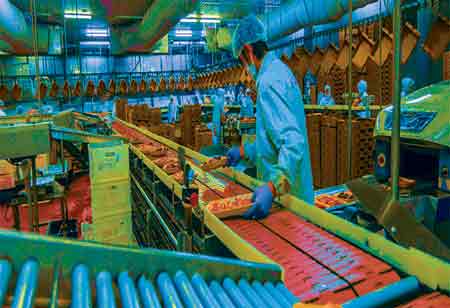Thank you for Subscribing to Food Business Review Weekly Brief
Essential Steps in Food Packaging Processes
Food packaging processes, such as material selection, design, filling, sealing, labeling, and quality control, ensure food products' safety, freshness, and appeal.

By
Food Business Review | Wednesday, August 28, 2024
Stay ahead of the industry with exclusive feature stories on the top companies, expert insights and the latest news delivered straight to your inbox. Subscribe today.

Food packaging processes, such as material selection, design, filling, sealing, labeling, and quality control, ensure food products' safety, freshness, and appeal.
FREMONT, CA: Food packaging is the most critical component in the food industry since it has a preeminent role in preserving quality, safety, and the length of time of foods. It protects against food contamination or spoilage and takes part in brand identity and consumer convenience. Knowing the main processes involved in food packaging will help ensure that products reach consumers in optimum condition.
The food packaging journey starts with selecting suitable materials. The choice of packaging material should be based on the nature of the food, the desired shelf life, and the required protection. Commonly used materials include plastics, glass, metals, and paper. Each of these materials has specific properties and benefits. For example, glass and metal are excellent barriers to moisture and oxygen, making them suitable for products with extended shelf life. Plastics are versatile and can be engineered to provide a wide array of protection. Paper and cardboard are commonly used due to their sustainability and ease of use.
As soon as the materials are chosen, the package is designed. Effective packaging design takes into consideration its functionality and aesthetics. Functionally, it should guarantee protection for the food from outside influences like light, air, and moisture, which cause spoiling. Adding resealable closures or easy-open mechanisms should allow for ease of use. Aesthetically, it must appeal to consumers through colors, graphics, and logos that identify brands and enhance visibility to attract buyers.
This goes hand in hand with the filling and sealing process. The filling means accurately putting the correct amount of food into the packaging. It is essential to do this carefully to ensure the product is consistent and properly portioned. Mainly, automated machines are used to fill items for more precise and clean filling, especially for large, continuous quantities. Sealing, however, is equally essential in ensuring the packaging is airtight and secure to avoid contamination and extend shelf life. Sealing may be by heat, vacuum, or pressure, depending on the form of packaging material and the nature of the food product concerned.
Labeling is crucial in food packaging, providing information on ingredients, nutritional content, expiration dates, storage methods, regulatory information, and brand constituents. Accurate labeling is legal and enhances consumers' decision-making. It also ensures the correct storage and use of food products, thereby enhancing consumer choice.
Quality control and testing are an intrinsic part of the packaging process. The rigid testing of the finished package and packaging material assures safety and quality. The integrity of the seals and the absence of leaks have to be checked, and it has to be verified if the packaging protects the food as it ought to. In initiation, quality control measures also include monitoring the entire packaging process so that any problems that crop up during production are noticed and resolved.






